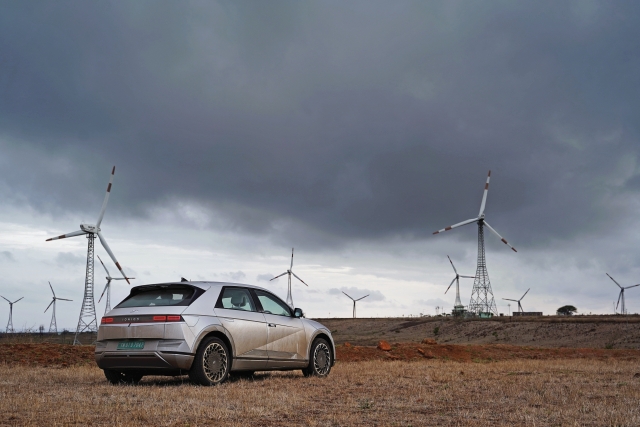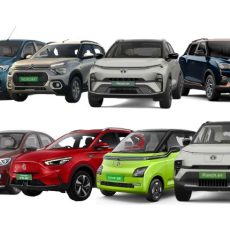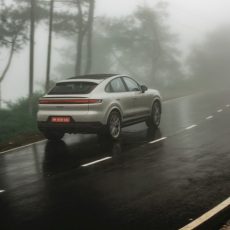We seek to uncover the synergy between wind energy and the Hyundai Ioniq 5, driving sustainability and a greener future with a visit to a wind farm.

In recent years, the urgent need to make a transition to renewable sources of energy has become increasingly apparent due to the detrimental effects of climate change. In this context, wind energy has emerged as a leading contender in the pursuit of sustainable power generation. By harnessing the natural force of the wind, we can produce clean electricity with minimal impact on the environment. However, the significance of wind energy extends beyond stationary applications, such as powering homes and industries. The automotive sector, recognising the potential for a greener future, has begun exploring integrating wind energy to power all-electric vehicles.

One remarkable example is the Hyundai Ioniq 5, a cutting-edge electric vehicle that showcases the marriage of wind energy and automotive innovation. This revolutionary concept highlights the profound importance of wind energy as a viable source of power transport, paving the way for a more sustainable and eco-friendly future. In this article, we will delve into the intricacies of wind energy and its pivotal role in propelling all-electric vehicles like the stunning Hyundai Ioniq 5, unveiling its immense potential for transforming how we travel.

While windmills that generate electricity and all-electric cars like the Hyundai Ioniq 5 may seem vastly different on the surface, they share some fundamental similarities in their working principles. At their core, both systems rely on the conversion of kinetic energy into usable power.
In a windmill, the rotation of the blades is driven by the force of the wind. As the wind pushes against the blades, it causes them to spin, converting the kinetic energy of the wind into mechanical energy. This rotational motion is then transferred to a generator, where it is further converted into electrical energy. Similarly, in an all-electric car like the Hyundai Ioniq 5, the vehicle’s electric motor plays a pivotal role. When the driver accelerates, electrical energy from the car’s battery is supplied to the motor, which converts it into mechanical energy to propel the vehicle forward. In both cases, the goal is to harness renewable energy sources (wind or electricity) and convert them into usable form (electricity or mechanical energy).
Furthermore, both windmills and all-electric cars benefit from advancements in technology that have significantly improved their efficiency and performance. Wind turbines have become more streamlined and optimized, with sophisticated design features that maximize energy capture from the wind. Similarly, electric vehicles have witnessed remarkable progress in terms of battery technology, motor efficiency, and overall range. Both windmills and electric cars reflect our commitment to innovation and sustainability, pushing the boundaries of what is possible in harnessing clean energy and promoting a greener future.
By recognising the shared principles of converting kinetic energy into usable power, we can appreciate the potential synergies between wind energy and all-electric vehicles. The utilisation of wind energy to generate electricity not only contributes to the grid but also presents an opportunity to power electric cars with clean and renewable energy sources. This integration not just reduces carbon emission from transport but also showcases the interconnectedness of various sustainable technologies in creating a more sustainable and environmentally conscious future.

During our visit with the Hyundai Ioniq 5, we had the privilege of exploring an impressive wind farm project located on the outskirts of Ahmednagar, expertly set up and operated by Santosh Manakchand Bothara, Executive Director, Paras Group of Industries. Spanning two decades of operation, this wind farm stands as a beacon of sustainability and forward-thinking energy solutions. The choice of Ahmednagar as the project site was astutely made, for the region experiences consistently high-velocity wind activity, making it an ideal location for harnessing the potential of wind energy. Under Bothara’s able leadership, the wind farm has made significant strides in contributing clean and renewable electricity to the region, making a noteworthy impact on the local energy landscape.
The Hyundai Ioniq 5 is a remarkable all-electric vehicle that combines innovative design, advanced features, and outstanding performance seamlessly. Its sleek exterior design with aerodynamic contours and futuristic aesthetics sets it apart from conventional vehicles, making it a head-turner on the road. Inside, the Ioniq 5 offers a spacious and luxurious cabin, utilising sustainable materials like eco-friendly textiles and recycled plastics, showcasing Hyundai’s commitment to environmental responsibility and sustainability.

Besides its captivating design, the Ioniq 5 boasts of an impressive array of features. It also won the coveted Red Dot Design Award. It incorporates a cutting-edge infotainment system with a large touchscreen display, advanced driver assistance systems, and seamless connectivity options, providing a state-of-the-art driving experience. Moreover, the car offers an impressive range and fast-charging capabilities, enabling drivers to cover long distances with ease while significantly reducing charging times. With its versatile interior space and practicality, the Ioniq 5 re-defines electric mobility by combining style and functionality in a single package.
Furthermore, the Ioniq 5’s performance is truly exceptional. Its electric powertrain delivers instant acceleration, ensuring a thrilling driving experience while producing zero tailpipe emission. Equipped with a 72.6-kWh battery pack, the car offers an impressive claimed range of up to 631 kilometres on a single charge. The rear axle’s 160-kW electric motor provides 217 hp and 350 Nm of torque, enabling the car to accelerate from 0 to 100 km/h in just 7.4 seconds. With its long range, powerful performance, and efficient battery, the Hyundai Ioniq 5 stands as an impressive electric car that meets the demands of modern electric mobility.
Harnessing more wind energy is paramount to achieve a sustainable and greener future. By increasing our reliance on wind power, we can significantly reduce our carbon footprint and dependence on fossil fuels. Wind energy is renewable, abundant, and clean, thus making it an ideal source to power our electrical cars. Knowing that our vehicles, such as the impressive Hyundai Ioniq 5, are fuelled by clean energy from wind farms gives us a sense of pride and satisfaction. It allows us to contribute to a more sustainable transport system, mitigating the environmental impact associated with traditional combustion engines. Embracing wind energy for electric vehicles aligns with our goals of creating a cleaner planet, reducing air pollution, and combating climate change. By investing in wind energy infrastructure and utilising it to power our vehicles, we can drive towards a future where sustainable transport becomes the norm and we can feel good about every kilometre we travel in our all-electric Hyundai Ioniq 5.







